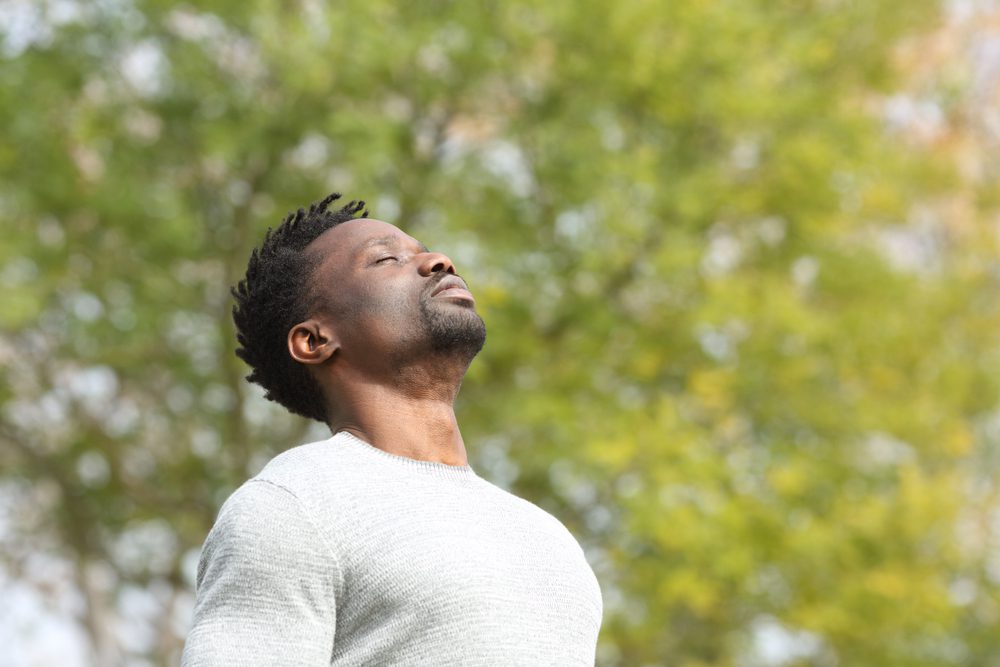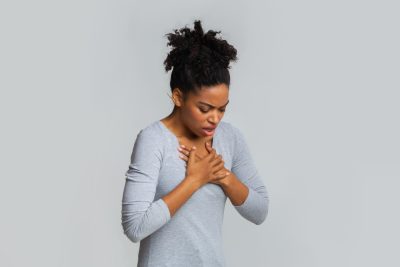lungThe respiratory system represents one of the body’s most remarkable yet often overlooked systems, automatically adjusting to our needs whether we’re sleeping, walking, or exercising intensely. Despite this natural efficiency, most people utilize only a fraction of their total lung capacity during normal breathing. The average person inhales about 0.5 liters of air during regular respiration, yet adult lungs can typically hold between 4 to 6 liters – revealing significant untapped potential for respiratory improvement.
Lung capacity refers not just to volume but also to efficiency – how effectively oxygen transfers from air into bloodstream and how completely carbon dioxide exits the body. This capacity naturally declines with age, with the average person losing about 1% of function yearly after age 35. However, research consistently demonstrates that proper breathing techniques can significantly slow this decline while improving overall respiratory performance regardless of age or fitness level.
Respiratory training works through several physiological mechanisms. Regular practice strengthens the diaphragm and intercostal muscles, allowing deeper breaths with less effort. These exercises also increase alveolar elasticity, improving the lungs’ ability to expand and contract efficiently. Additionally, certain techniques enhance the blood-oxygen exchange process, optimizing how effectively each breath delivers oxygen to tissues throughout the body.
The benefits of improved lung function extend far beyond respiration itself. Enhanced oxygen delivery improves cognitive function, increases energy levels, reduces stress through nervous system regulation, and boosts immune function by promoting optimal cellular activity. For those with respiratory conditions like asthma or COPD, specific breathing exercises have been shown to reduce symptom frequency and severity while improving overall quality of life.
While breathing comes naturally, proper respiratory technique requires conscious practice. Many people develop suboptimal breathing patterns, particularly during stress, that utilize primarily the upper chest rather than engaging the diaphragm fully. These shallow breathing habits limit oxygen intake and can contribute to numerous health issues over time. The following exercises provide systematic approaches to retraining respiratory patterns for optimal function.
Diaphragmatic breathing for foundation strengthening
The first essential technique involves diaphragmatic breathing, which establishes the foundation for all advanced respiratory exercises. Unlike chest breathing that primarily engages the intercostal muscles, diaphragmatic breathing activates the dome-shaped muscle separating the chest and abdominal cavities – the body’s primary breathing muscle designed to handle most respiratory workload.
Proper technique begins with comfortable positioning, either lying flat with knees bent or sitting with straight posture. Placing one hand on the chest and another on the abdomen just below the ribcage creates awareness of movement patterns. The primary objective involves breathing deeply through the nose while keeping the chest relatively still, allowing the abdomen to rise substantially with each inhalation as the diaphragm contracts and descends.
Exhalation should occur slowly through slightly pursed lips, ideally lasting twice as long as inhalation. This extended exhalation phase encourages more complete emptying of the lungs, which subsequently allows deeper inhalation during the next breath cycle. Throughout the exercise, focus should remain on keeping shoulder and neck muscles relaxed, as tension in these areas often indicates reversion to chest breathing patterns.
For beginners, the initial practice period should last 5-10 minutes daily, gradually increasing to 15-20 minutes as technique improves. Many practitioners find that using a small book or lightweight object on the abdomen provides helpful visual feedback about proper diaphragm engagement. The weight rises substantially during correct inhalation and lowers during exhalation, creating clear metrics for technique assessment.
Progression involves gradually increasing breath control during daily activities beyond dedicated practice sessions. Applying diaphragmatic breathing during walking represents an excellent intermediate step, synchronizing breath with movement while maintaining proper technique. Advanced practitioners eventually maintain diaphragmatic breathing during more strenuous activities, ultimately making it their default breathing pattern throughout daily life.
The physiological benefits of mastering this technique extend beyond respiratory improvement. Research demonstrates that diaphragmatic breathing activates the parasympathetic nervous system, reducing stress hormone production and promoting relaxation responses throughout the body. This dual benefit of enhanced oxygen utilization and stress reduction makes diaphragmatic breathing particularly valuable for those with anxiety-related breathing disorders or stress-induced respiratory patterns.
For individuals with chronic respiratory conditions, adaptation may be necessary. Those with COPD often benefit from practicing in seated positions with slight forward leaning, which reduces the effort required for diaphragm contraction. Regardless of individual circumstances, the foundational nature of diaphragmatic breathing makes it essential to master before progressing to more advanced techniques.
Pursed-lip breathing for improved airflow control
The second key technique, pursed-lip breathing, specifically addresses airflow regulation and lung emptying efficiency. This approach proves particularly valuable for preventing airway collapse during exhalation – a common issue for those with obstructive conditions like COPD or emphysema. However, even individuals with healthy respiratory systems benefit from the enhanced control and breathing awareness this method develops.
The technique involves a simple two-step process: inhaling slowly through the nose for approximately two counts, then exhaling through pursed lips (as if gently blowing through a straw) for four to six counts. The slight resistance created by the pursed-lip position helps maintain positive pressure in the airways during exhalation, preventing premature airway closure and allowing more complete lung emptying.
Proper lip positioning proves crucial for effectiveness. The lips should form a small opening, creating noticeable resistance without requiring excessive force. Many practitioners describe the ideal position as similar to whistling or cooling hot food – relaxed yet controlled. The exhalation should produce a soft sound but not forceful enough to cause light objects to move if practicing near them.
Implementation often begins with short practice sessions of 5-10 repetitions, gradually increasing duration as technique improves. Unlike some advanced breathing exercises, pursed-lip breathing can be performed virtually anywhere without drawing attention, making it ideal for integration throughout daily activities. Many practitioners find it particularly helpful during physical exertion, using it to regulate breathing during climbing stairs, walking uphill, or other activities that typically trigger respiratory rate increases.
For individuals with chronic lung conditions, this technique provides practical benefits during symptomatic episodes. When experiencing shortness of breath, the controlled exhalation helps reestablish normal breathing patterns while reducing the anxiety that often accompanies respiratory distress. This self-regulation ability significantly improves quality of life for many with chronic respiratory challenges.
Measuring progress with pursed-lip breathing involves monitoring several factors. Increased exhale duration relative to inhale length indicates improving control, while the ability to maintain consistent rhythm during physical activity demonstrates functional integration. Many practitioners also report subjective improvements in breath comfort and reduced sensations of respiratory effort during daily activities.
Advanced practitioners often combine pursed-lip breathing with diaphragmatic technique, creating a comprehensive approach that optimizes both inhalation and exhalation phases. This combination proves particularly effective during interval training or other activities involving varying exertion levels, allowing rapid adaptation to changing oxygen demands while maintaining respiratory efficiency.
Box breathing for lung capacity expansion
The third technique, box breathing (also called square breathing), provides systematic respiratory training through precisely timed breath phases. This structured approach develops control over all aspects of the breathing cycle while gradually expanding lung capacity through controlled air retention and release patterns.
The standard practice involves four equal phases forming the “box” pattern: inhale for four counts, hold the breath for four counts, exhale for four counts, and hold again for four counts before beginning the next cycle. This balanced pattern trains respiratory muscles through both active phases (inhalation and exhalation) and isometric holds, developing comprehensive breathing strength and control.
Proper technique begins with comfortable positioning, typically seated with straight posture and relaxed shoulders. Breath quality matters more than quantity – each phase should maintain consistent timing without straining. Beginners often find counting mentally or using subtle hand movements helps maintain precise timing without external devices.
Initial practice typically involves 5-10 complete box cycles, with gradual progression in both repetitions and phase duration as capacity increases. Many practitioners eventually extend each phase to 5-6 seconds, creating a more challenging exercise that further expands capacity. However, the emphasis should always remain on maintaining perfect control rather than maximizing duration – strained breathing indicates overexertion and reduces technique effectiveness.
The physiological benefits extend beyond simple lung capacity. The controlled breath-holding phases help optimize carbon dioxide levels, which paradoxically improves oxygen utilization through the Bohr effect – the physiological principle where slightly elevated carbon dioxide levels enhance oxygen release from hemoglobin to body tissues. This effect explains why practitioners often report increased energy and mental clarity following regular box breathing practice.
Adaptation for various conditions and ability levels involves adjusting the box dimensions rather than abandoning the structural approach. Those with limited capacity might begin with shorter phases (perhaps 2-3 counts each), while maintaining the fundamental four-phase pattern. Conversely, advanced practitioners might extend certain phases for specific benefits – longer exhalations for relaxation or extended inhalation holds for increased oxygen absorption.
Performance assessment involves monitoring several metrics over time. Increasing comfortable phase duration indicates expanding capacity, while the ability to maintain precise timing throughout more repetitions demonstrates improving endurance. Many practitioners also track resting respiratory rate throughout the day, with gradual reductions indicating improved overall efficiency resulting from regular practice.
Advanced applications extend beyond formal practice sessions into functional breathing during various activities. Many athletes implement modified box patterns during training to optimize oxygen delivery during specific movement phases. Similarly, individuals with performance anxiety often utilize abbreviated box techniques to regulate respiration during stressful situations, preventing the hyperventilation that commonly occurs during heightened emotional states.
4-7-8 breathing for complete respiratory development
The fourth technique, known as 4-7-8 breathing, represents perhaps the most comprehensive approach for developing all aspects of respiratory function. This method combines elements of the previous techniques into a structured practice that systematically trains inhalation capacity, breath retention, controlled exhalation, and respiratory muscle strength.
The technique follows a specific counted pattern: inhale quietly through the nose for 4 counts, hold the breath for 7 counts, then exhale completely through pursed lips for 8 counts. This asymmetrical pattern creates distinct training effects for each respiratory phase – moderate inhalation development, substantial breath retention training, and extended exhalation control that promotes complete lung emptying.
Proper implementation begins with seated positioning, maintaining straight posture with relaxed shoulders. The tongue position adds an important element not present in other techniques – the tip should rest gently against the ridge behind the upper front teeth throughout the exercise. This tongue placement creates subtle resistance that enhances awareness of airflow patterns while engaging additional respiratory-related muscles.
Initial practice should limit repetitions to prevent lightheadedness from altered oxygen-carbon dioxide balance. Beginning with 4 repetitions and gradually increasing to 8 represents an appropriate progression for most practitioners. Unlike some respiratory exercises where multiple daily sessions provide benefits, 4-7-8 breathing typically works best with one or two dedicated practices daily, as its potent effects on nervous system regulation can create excessive relaxation if overused.
The physiological mechanisms behind this technique’s effectiveness involve both respiratory and neurological elements. The extended breath-hold phase creates moderate carbon dioxide increase, enhancing oxygen delivery to tissues through the previously mentioned Bohr effect. Simultaneously, the prolonged exhalation activates parasympathetic nervous system responses, reducing stress hormone production and creating systemic relaxation effects that improve overall respiratory efficiency.
Measuring progress involves monitoring several factors beyond simple repetition counts. The ability to maintain the precise ratio between phases indicates improving control, while developing capacity to perform the technique during minor stressors demonstrates functional integration. Many practitioners also track sleep quality and stress resilience, as improvements in these areas often correlate with consistent practice.
Adaptation for various conditions primarily involves adjusting the counting pace rather than changing the fundamental ratio. Those with limited capacity might use faster counting, completing each cycle more quickly while maintaining the 4:7:8 relationship between phases. As capacity improves, practitioners gradually slow the counting pace, extending each phase while preserving the ratio that gives this technique its unique effectiveness.
Advanced implementation often includes application during specific challenging situations. Many practitioners utilize this technique before public speaking, difficult conversations, or other stressful events to establish optimal respiratory patterns and nervous system regulation. The technique’s dual benefits for both respiratory function and stress management make it particularly valuable for addressing the breathing pattern disorders commonly associated with anxiety conditions.
Implementing breathing exercises for maximum benefit
Developing effective respiratory capacity requires more than simply knowing techniques – implementation strategy significantly impacts results. Creating sustainable practice routines, tracking progress appropriately, and adapting approaches for specific conditions ensure optimal outcomes from breathing practice.
Establishing proper practice environments enhances effectiveness for all techniques. Well-ventilated spaces with clean air provide optimal conditions, while practicing outdoors in natural settings often improves both compliance and results. Posture during practice significantly impacts outcomes – sitting or standing with proper spinal alignment allows full diaphragm excursion and optimal chest expansion compared to slouched positions that restrict respiratory mechanics.
Progression strategies should follow systematic patterns. Beginning with diaphragmatic breathing establishes proper foundation, typically practicing for 1-2 weeks before adding pursed-lip techniques. Box breathing introduces structured timing after these basics are mastered, while 4-7-8 breathing generally works best once practitioners develop comfort with all previous techniques. This methodical progression prevents overwhelm while ensuring each technique builds upon properly established fundamentals.
Tracking methods provide motivation and objective assessment. Many practitioners maintain breath journals recording practice consistency, subjective experience, and measurable metrics like comfortable breath-hold time or maximum exhalation duration. Modern respiratory training devices offer more precise measurements, tracking metrics like respiratory rate variability or volumetric changes that provide detailed progress indicators.
Integration into daily activities ultimately determines long-term benefits. While dedicated practice sessions develop capacity, applying techniques during regular activities creates lasting change in respiratory patterns. Walking while practicing diaphragmatic breathing, using pursed-lip techniques during household chores, and implementing box breathing during commutes transforms occasional practice into continuous respiratory development.
Common implementation challenges include consistency barriers, technique verification, and progress plateaus. Many find that linking breathing practice with existing habits improves adherence – practicing immediately after brushing teeth or before meals establishes consistent triggers. Video recording practice sessions occasionally helps identify subtle technique errors invisible during practice itself. For progress plateaus, temporarily focusing on different techniques often restarts development when one approach stops producing improvements.
Specific adaptations benefit those with various health conditions. Individuals with asthma typically benefit from emphasizing exhalation control techniques, while those with restrictive conditions like pulmonary fibrosis often respond better to techniques expanding inhalation capacity. Cardiovascular conditions generally require more gradual progression with careful monitoring, while pregnancy necessitates avoiding extended breath holds particularly during later trimesters.
The cumulative benefits extend well beyond respiratory metrics. Improved sleep quality, reduced stress reactivity, enhanced cognitive function, and increased physical stamina frequently accompany regular breathing practice. Many practitioners report these “side benefits” actually provide greater life enhancement than the respiratory improvements that initially motivated their practice, creating powerful motivation for continued implementation.
The connection between breathing and overall wellness
The relationship between respiratory function and holistic health extends far beyond simple oxygen delivery. Breathing patterns directly influence nearly every physiological system through complex interconnections only recently becoming understood through scientific research.
The nervous system-respiratory connection provides perhaps the most immediate link between breathing and broader wellness. The vagus nerve – the primary parasympathetic nervous system pathway – maintains bidirectional communication with respiratory centers, creating direct relationships between breathing patterns and stress responses. Slow, controlled breathing activates parasympathetic functions that reduce heart rate, lower blood pressure, improve digestion, and enhance immune function through decreased stress hormone production.
Cardiovascular benefits emerge through several mechanisms. Beyond direct heart rate regulation, respiratory training improves cardiac output efficiency, enhances vascular elasticity, and optimizes blood oxygen saturation. These changes reduce cardiac workload while improving tissue perfusion throughout the body, creating systemic benefits from regular breathing practice.
Metabolic improvements occur through enhanced oxygen utilization at cellular levels. Proper breathing techniques increase mitochondrial efficiency – the energy-producing cellular components requiring constant oxygen supply. This enhanced cellular metabolism improves everything from brain function to muscle recovery while potentially reducing inflammation through optimized energy production.
Cognitive function demonstrates particularly notable benefits from respiratory training. The brain consumes approximately 20% of the body’s oxygen despite representing only 2% of body weight, making it especially sensitive to improved oxygen delivery. Research consistently shows connections between breathing efficiency and enhanced attention, memory, and executive function, with some studies demonstrating measurable cognitive improvements within weeks of beginning regular breathing practice.
Sleep quality shares bidirectional relationships with respiratory function. Breathing pattern disorders frequently contribute to sleep disturbances, while poor sleep often exacerbates suboptimal breathing patterns. Regular implementation of techniques like 4-7-8 breathing before bedtime helps establish physiological conditions conducive to deeper sleep onset and maintenance, creating positive cycles of improved respiration and enhanced rest.
Immune system function responds remarkably to respiratory optimization. Beyond stress reduction effects that preserve immune resources, proper breathing enhances lymphatic circulation – the system transporting immune cells throughout the body. This improved immune surveillance helps identify and address potential threats more efficiently, potentially reducing infection frequency and severity.
The mind-body connection perhaps represents the most profound relationship between breathing and wellness. Respiratory patterns form the most accessible bridge between conscious control and automatic functions, making breathing the ideal entry point for developing broader mind-body awareness. This expanded self-regulation capacity often extends into other areas like emotional regulation, physical tension awareness, and stress management capabilities.
Ultimately, the four techniques presented provide not just respiratory development but potential transformation of overall health through one of the body’s most fundamental yet overlooked processes. By reclaiming conscious influence over this essential function through regular practice, individuals can access profound wellness benefits through simple techniques requiring no special equipment or environments – just consistent attention to the breath that sustains life moment by moment.














